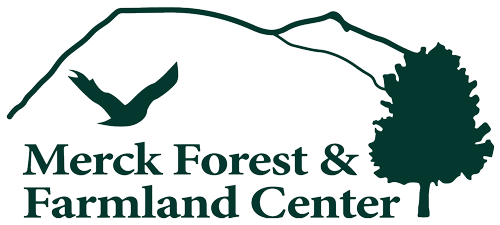Forest Management at MFFC
Forests are dynamic, diverse ecosystems shaped by wind, ice, insects, wildlife, inter-tree competition, rain, soils, and humans. At Merck, part of our mission is to demonstrate sustainable forestry. By managing our forests we can produce forest products and services that benefit us, while positively impacting our forest ecosystems. Here’s an inside look at how we are doing this at Merck.

One of our projects this season has been the regeneration of an area in the sugar bush cleared nearly twenty-five years ago. The intention at the time had been to allow sunlight to reach the forest floor and regenerate the area, but instead of a nice young group of long-lived sugar maples, new growth was dominated by shorter-lived striped maple. Since we cannot tap striped maple, and since there is no lack of them in other places in the sugarbush, we removed them. With the heavy sugar maple seed crop this year and sunlight reaching the forest floor, we should soon have a young healthy group of sugar maples. This is key in helping us to sustainably produce and carry on the Vermont tradition of making pure maple syrup.
A project that has been a few years in the making has been our “Foresters for the Birds” project. The purpose of this project is to integrate the management of timber areas and songbird habitats by creating small groups of regeneration within a forest stand. This will result in crowns of different heights, establishing vertical structural diversity in the stand, which is important for a number of declining bird species in the region. This project should be finished by this fall, and will soon make for an excellent destination for birders at the southern end of the property. To learn more about the “Forester’s for the Birds” program visit http://vt.audubon.org/conservation/foresters-birds .
 Near the “Forester’s for the Birds” site we are regenerating a one-to-two acre patch of forest using the seed-tree method: removing almost all of the trees except for a handful of the best quality trees, which will serve as the seed source for a new generation of black cherry trees. Cutting groups, as described in the last few projects, allows trees such as sugar maple (which still grow well with some shade) to regenerate. However, black cherry competes and grows best in full sun. Thus, in order to manage for forest diversity, it is sometimes necessary to create larger openings to more fully utilize solar energy.
Near the “Forester’s for the Birds” site we are regenerating a one-to-two acre patch of forest using the seed-tree method: removing almost all of the trees except for a handful of the best quality trees, which will serve as the seed source for a new generation of black cherry trees. Cutting groups, as described in the last few projects, allows trees such as sugar maple (which still grow well with some shade) to regenerate. However, black cherry competes and grows best in full sun. Thus, in order to manage for forest diversity, it is sometimes necessary to create larger openings to more fully utilize solar energy.
When we manage our forests we are thinking of many things: maple syrup, wildlife habitat, timber, carbon sequestration, clean air, and clean water — all are products of healthy managed forests. As we manage the forest we do not only look at what we can take today, but also at the whole ecosystem complex which will provide for current and future generations. To ensure positive impacts and sustainable forests we manage to maintain and protect the integrity of our forested ecosystems.


Great job Ethan!